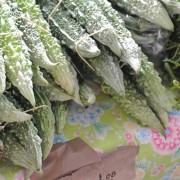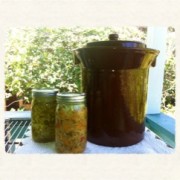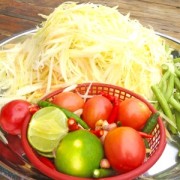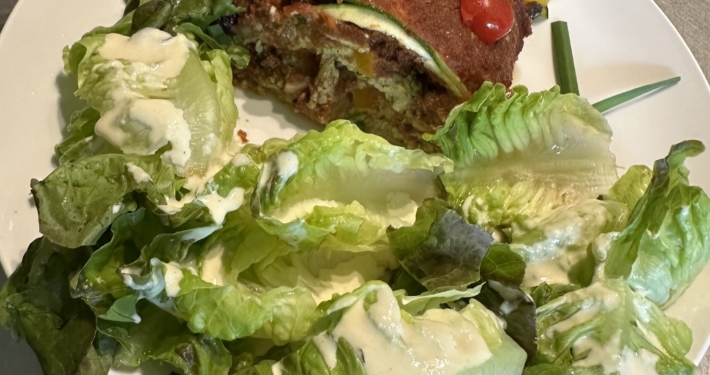Candida albicans is a type of yeast that is a natural part of a healthy gut. The digestive tract contains numerous microorganisms (bacteria, yeast, etc.) that compete for limited resources, including nutrients and space. For optimum health, these microorganisms should be in balance with one another. This balance is often disrupted in times of stress, trauma or illness. Common interventions such as the use of antibiotics to treat infection can negatively alter the composition of the microorganisms in the gut. For example, broad-spectrum antibiotics kill all of the bacteria in the gut, providing more space for Candida albicans to flourish and wreak havoc on the entire body. They also alkalinize the guts creating a favorable environment for candida overgrowth.
Overgrowth of Candida albicans in the gut may contribute to headaches, mood swings, sweet cravings, fatigue, poor concentration and other states of illness. The yeast release their waste and toxins into the bloodstream, which may result in an allergic response in the body. For these reasons, antibiotic use should be limited in time and frequency of use to minimize their detrimental and weakening effects on the immune system long term.
Anti-Candida Raw Diet
When patients present with overgrowth of candida and are following a candida detox supplement protocol, the raw food diet is adjusted for candida detox. It is important to remove all sugar and starch from the diet. That includes adjusting fruit intake as well as removing several starchy vegetables from the diet.
Vegetables that are excluded until the candida growth is fully under control:
- Corn
- Carrots
- Beets
- Peas
- Mushrooms (all kinds)
- Sweet potatoes
- Potatoes
- Yams
- Parsnips
These vegetables can be introduced in small portions by patient at later stage when candida is under control.
Fruits are eliminated and only half a papaya is allowed for breakfast or use in breakfast smoothie. Small amount of apple or grapefruit may be eaten at breakfast when available.
No pistachios, cashews or peanuts are used in food preparation while following a candida detox diet. In addition several other ingredients are excluded as well: honey, molasses, agave, sundried fruit, raising, dates, raw desert, raw cacao, raw sprouted grains, raw oatmeal, shoyo, miso, vinegars (all types) and coconut water (coconut meat is used).
We include therapeutic foods for candida:
- Green Papaya Salad
- Bitter Melons (medicinal foods)
- Fermented Foods (raw sauerkraut, Kimchi or Kimchee)
- Blue-Green Algae like Spirulina and Chlorella
In addition to an adjusted detox diet, the enema often is changed from a coffee enema to an herbal enema or the enemas are alternated. Furthermore, probiotics are implanted into the colon during colon hydrotherapy sessions to further help restore the growth of friendly bacteria. The probiotics help to keep unfriendly bacteria and yeast under control.
Following are more general guidelines for an Anti-Candida Diet. Since our detox programs already have most of these items excluded these guidelines are more suited for a maintenance diet after the candida cleanse was completed or for those who are reading this and looking for general directions on how to eat when dealing with candida.
Foods to Avoid
Additives & Preservatives: Avoid chemical preservatives that are difficult to pronounce. Eliminate citric acid (e.g. found in bottled lemon juice), as yeast are involved in processing it. Avoid consumption of non-organic meats or eggs, as they often contain steroids, pesticides and hormones, which disrupt the flora of the gut. For a list of food additives and information rating them based on safety, check out http://www.cspinet.org/reports/chemcuisine.htm.
Alcohol: Alcohol is high in sugars that feed the yeast, so wine, beer and spirits should all be avoided.
Caffeine: Caffeine gives the yeast a “boost” as it does for you!!! Avoid caffeinated beverages and foods (including pop, coffee, non-herbal teas, energy drinks, chocolate, etc.). Many of these products contain sugar and/or other sweeteners, which are not advisable when trying to rid the body of yeast.
Dairy: Candida albicans prevents the body from breaking down fat properly. Aged cheeses are the worst culprits, although all dairy products should be avoided when trying to eliminate yeast.
Fruits: Limit fruit consumption, especially tropical fruits (mangoes, pineapple, papaya, etc.) which are high in natural sugars. Dried fruits should also be avoided, as the sugars become more concentrated when the water content of the fruit is removed. Avoid eating melons, strawberries and grapes, which are very susceptible to moulds. Canned fruits are also not recommended, as they often contain added sugars, syrups, dyes and preservatives. If you continue to consume fruit, choose sub-acidic fruits such as apples and pears, or berries that grow on trees rather than low-lying ones.
Glutenous Foods: Many people are sensitive or intolerant to gluten, without being aware of it. Consuming gluten-containing grains diverts the body’s resources from combating an overgrowth of Candida albicans because it is busy trying to manage the gluten overload. The main gluten containing grains are wheat, barley and rye, although spelt, kamut, amaranth millet and oats also contain some gluten. Rice is a good substitute for gluten-containing breads, cereals and pasta.
Mushrooms: Mushrooms are a type of fungi. Candida albicans loves to feed on moulds and fungi, therefore all mushroom products should be avoided.
Nuts: Some nuts (especially peanuts) are high in moulds. Nuts that were cracked a long time ago (e.g. those found in bulk food stores or pre-packaged nuts) are also more susceptible to developing mould, which is particularly detrimental when Candida albicans is abundant in the body.
Spices: Spices can destroy the healthy bacteria in the gut, providing an environment for Candida albicans to flourish. For this reason, pungent spices such as curry and hot peppers should be eliminated.
Sugar: Sugar feeds the yeast, therefore all products containing sugars (whether refined or natural sugars) should be avoided. This includes glucose, fructose, sucrose, high fructose corn syrup, etc.
Vinegar: Vinegar should be eliminated because it is made in a yeast culture, and depletes stomach acid, which is essential for digestion. However, apple cider vinegar may be useful in ridding the body of yeast. All pickled products, commercial salad dressings and other vinegar-containing foods should be removed from the diet.
Foods to Eat
Vegetables: Eat a variety of vegetables to provide a balance of nutrients. Vegetables generally starve Candida albicans of sugar and mould and help to remove toxic yeast byproducts from the body. Some vegetables that are particularly helpful in inhibiting Candida albicans include garlic, onions, cabbage, broccoli, Brussel’s sprouts and kale. Starchy vegetables, such as potatoes, sweet potatoes, yams and other roots should be eliminated, as they tend to have high sugar content.
Proteins: A diet rich in lean proteins helps to starve the yeast of sugar and molds and restricts their growth, while providing essential nutrients and a sense of fullness. A vegetarian diet is beneficial. However, if you choose to eat meat, organic animal sources of protein are preferred over non-organic ones (chicken, fish, beef, eggs, etc.), as the hormones and pesticides in non-organic products create an extra toxic burden to the body. Processing these toxins diverts resources from combating yeast overgrowth.
Nuts & Seeds: Although some nuts and seeds should be avoided due to their high mold content (e.g. peanuts), these foods are generally high in protein, which starves the yeast. It is best to crack and remove the shells off the nuts and seeds just before you intend to eat them, as this helps to preserve freshness and remove molds. Alternatively, soaking them in water or spraying them with grapefruit seed extract or veggie wash may help to minimize the mould content.
Probiotics: Live yogurt cultures, kefir, sauerkraut and miso all contain probiotics, which help to restore balance to the digestive tract. Probiotics are particularly useful after a course of antibiotics. Obtaining probiotics from supplements may be more beneficial than food sources in cases of excessive Candida albicans, as some fermented foods contain sugar, vinegar or other components that should be avoided when trying to rid the body of systemic yeast.Non-Glutenous Grains: Including rice (brown or wild rice is preferred) for cereals, pastas and grain products (breads, etc.) is recommended as a substitute for wheat, rye and barley-containing products. Potatoes, corn and tapioca flours are gluten free, however, these foods are fairly starchy and should be limited or they may feed the yeast. (Read article on Fermentation, Get Recipes)
Blue-Green Algae: Consuming algae such as spirulina and chlorella can help to restore the gut while balancing the immune system over time. These organisms are beneficial in managing a yeast outbreak. Other treatments such as internal cleanses, supplements and herbal products may be useful in reducing Candida albicans overgrowth. However, it is highly recommended that you consult your naturopathic doctor or other natural healthcare provider before introducing such treatments, as not all interventions are suitable for everyone.
References & Resources:
Natural Medicines Comprehensive Database: www.naturaldatabase.com
Candida Diet: www.thecandidadiet.com
Food Safety: Food Additives, Center for Science in the Public Interest http://www.cspinet.org/reports/chemcuisine.htm
This article was contributed by naturopathic physician – Patrice de Peiza, N.D. during a Naturopathic Doctor Internship at HNRC.









